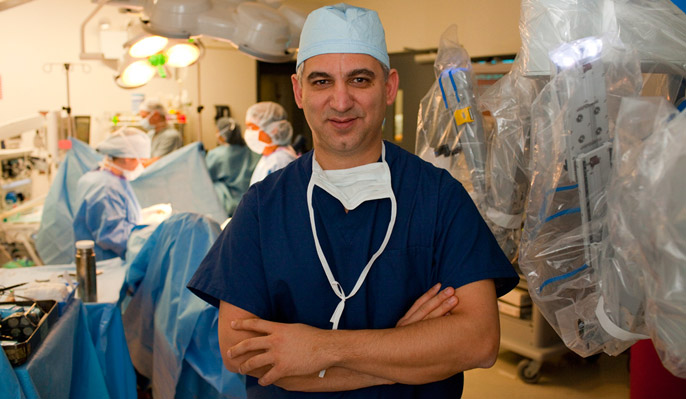Is the Cost of Robotic Surgery Justified?
/Robotic prostate surgery is often favored as the next big thing in prostate cancer treatment, but it’s value is repeatedly called into question. Do the benefits of robotic prostatectomy surgery outweigh the expense? How much more expensive is robotic surgery? In the delicate world of prostate cancer and saving lives, at what point does price matter?
Dr. David Samadi, innovator of the Samadi Modified Advanced Robotic Technique (SMART) surgery shared why the more than 4,000 successful robotic prostatectomy surgeries he’s performed are worth every penny. How many pennies? FDA approved in 2000, the da Vinci Surgical System has a reported price tag between $1.5 and $2.5 million per machine.
A recent comparison of prostate removal via robotic and traditional surgery found robotic surgery tacks about $1500 onto the bill per patient. The same researchers at the Mayo Clinic in Rochester, Minnesota reported that robotic surgery patients had fewer post-operative complications and hospital stays half those of their traditional surgery counterparts.
SMART surgeon, Dr. Samadi shares his two cents on what that $1500 buys his prostate cancer patients:
Q. Is robotic prostate surgery really better?
Dr. Samadi: I firmly believe it is. I have the unique birds eye view of all three prostate removal procedures – traditional surgery, laparoscopic surgery, and robotic surgery. Robotic prostatectomy surgery is better for the surgeon and the patient.
Q. How is robotic prostatectomy better for the patient?
Dr. Samadi: Shorter hospital stays, less blood loss, faster recovery, and ultimately a better quality of life. The majority of men with prostate cancer are active and otherwise healthy. They choose robotic surgery to get rid of the cancer and go on enjoying life. To them that means remaining sexually active and continent, plain and simple. Robotic surgery delivers that and more.
Q. What are the benefits of robotic surgery to the surgeon?
Dr. Samadi: Procedure drives outcome; the benefits to the patient are the direct result of how the surgery is performed in both technique and surgeon experience. The robot has a 3D high-def monitor and extreme dexterity so I can guide the tiny surgical instruments in any direction. We use only five small incisions, so the surgical field has very little blood. Some of the physical strain of standing and bending over the patient for hours is alleviated with the seated console. The focus becomes entirely about the patient and the delicate components of the prostate.
Q. So all it takes is a fancy robot?
Dr. Samadi: Some institutions would like patients to believe that but, no the robot is merely an extension of the surgeon. Each time I praise the robot I have to give credit to its predecessors. My success comes from the time I spent perfecting open and laparoscopic prostate removal surgeries, plus my robotic experience and dedicated surgical team. Each of those things is folded into my SMART surgery. It’s like choosing a driver and a pit crew. Just because you have the best car on the track doesn’t mean you’ll win the race.
Q. What about the cost?
Dr. Samadi: I’d say $1500 is a small price to pay for urinary control, sexual potency, and life. I know my patients and their families agree. So on an individual level, for less than the cost of a new laptop, men receive immeasurable return. On a broad level, the long-term cost savings has tremendous impact on hospitalization costs and the U.S. healthcare system. It’s difficult for studies to link nationwide reductions in readmission, follow-up procedures, and ongoing medical care to a specific procedure. But for 12 years robotic prostatectomy surgery has undoubtedly impacted those numbers for the better.
While critics espouse the bias of robotic surgeons, Dr. Samadi is perhaps better credentialed to comment on the surgical value of the robot than some. In partnership, Dr. Samadi performed the very first da Vinci robotic prostatectomy surgeries in the world. His dedication to perfecting the procedure continues today as his SMART surgery is taught worldwide for continued improvement in patient results and global healthcare.
Dr. David Samadi is Vice Chairman, Department of Urology and Chief of Robotics and Minimally Invasive Surgery at The Mount Sinai Medical Center in New York where he performs each robotic prostatectomy himself, from start to finish. www.roboticoncology.com

